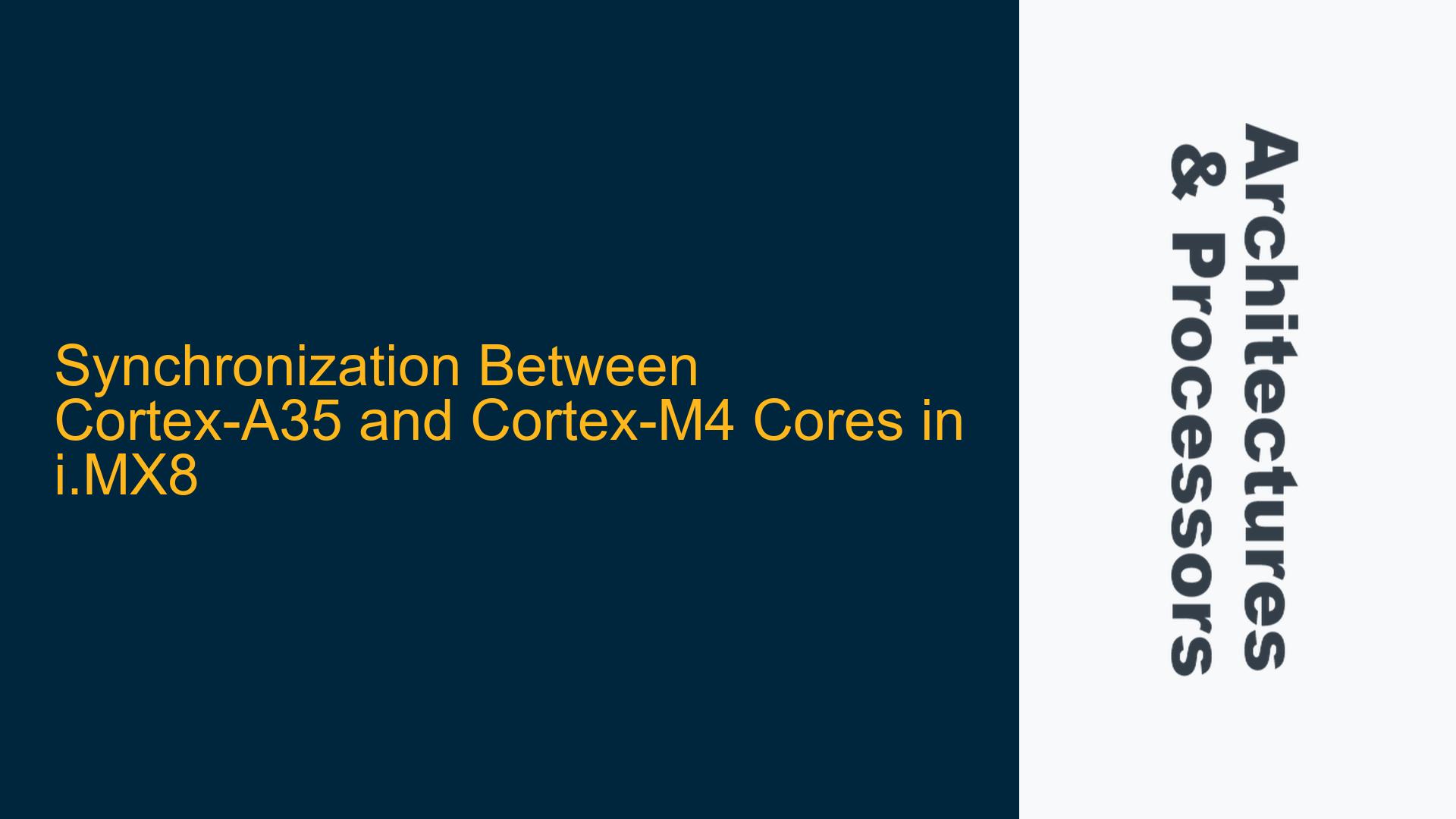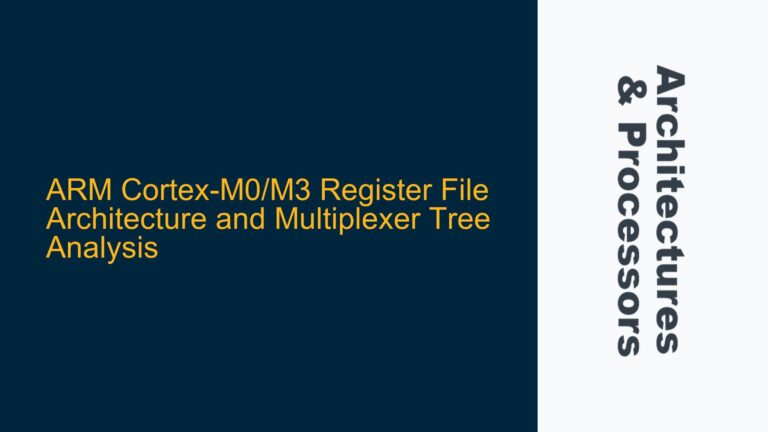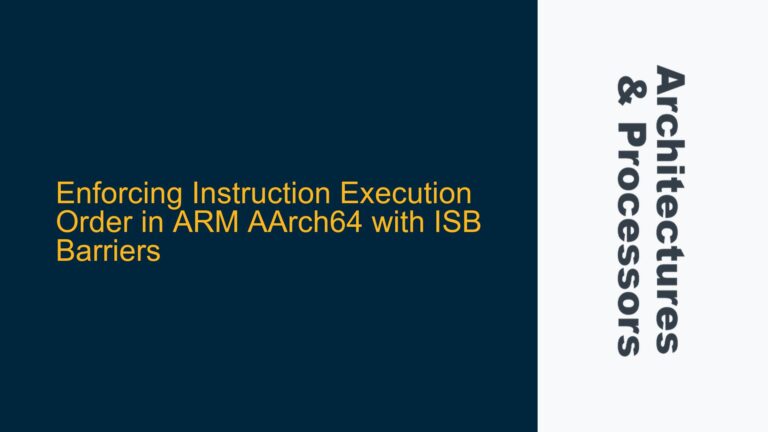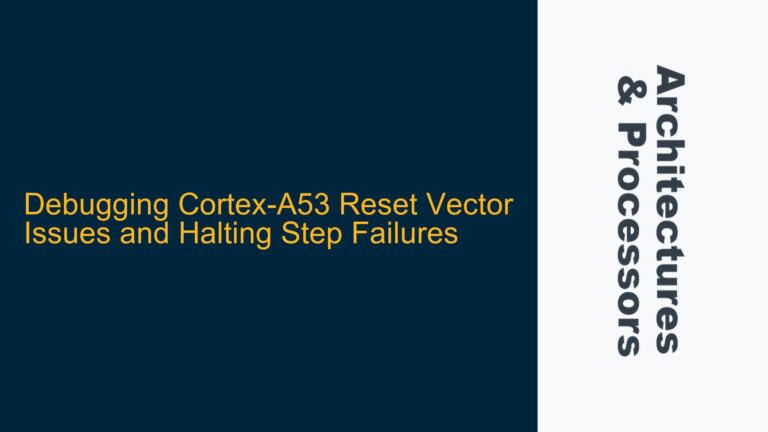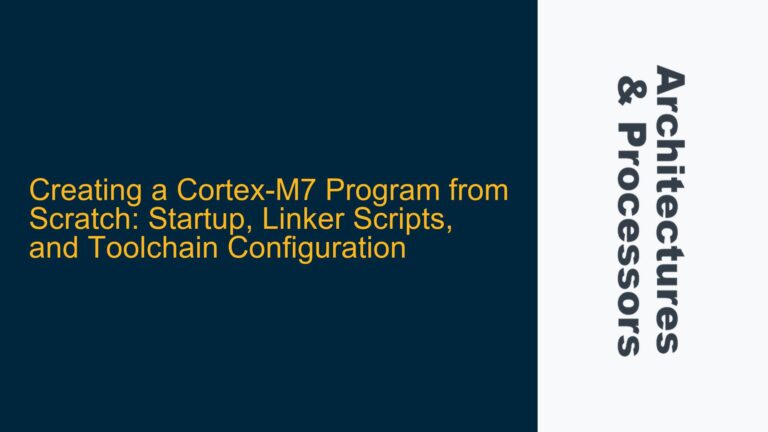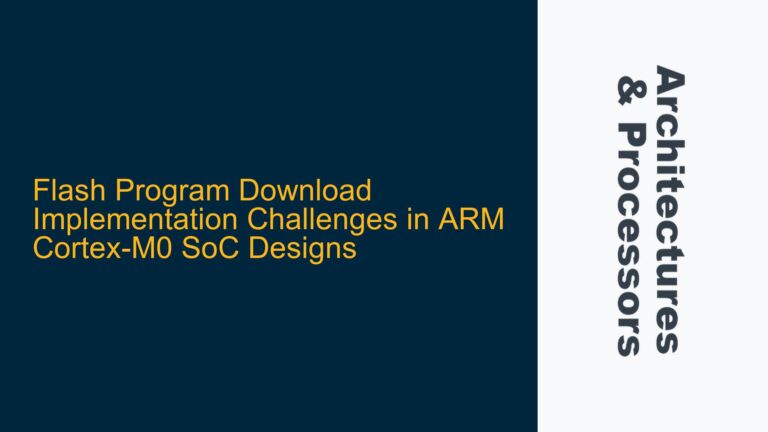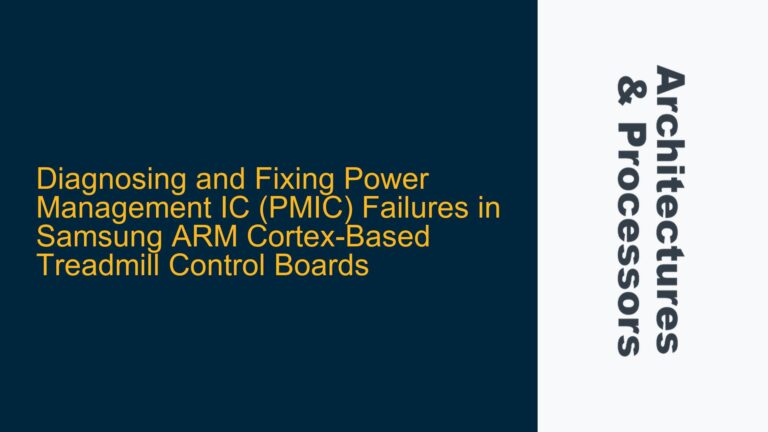Inter-Core Synchronization Challenges in Heterogeneous Multi-Core Systems
In embedded systems featuring heterogeneous multi-core architectures, such as the NXP i.MX8 with its QuadCore Cortex-A35 and Single Core Cortex-M4, achieving reliable inter-core synchronization is a critical yet complex task. The Cortex-A35 cores, being high-performance application processors, and the Cortex-M4, a real-time microcontroller, operate in fundamentally different contexts. The Cortex-A35 typically runs a full-fledged operating system, while the Cortex-M4 often handles real-time tasks in a bare-metal environment. This architectural disparity introduces challenges in ensuring coherent communication and synchronization between the cores.
The primary issue arises from the lack of a unified memory model and hardware synchronization primitives that work seamlessly across both architectures. While the Cortex-A35 cores can use Load/Store Exclusive (LDREX/STREX) instructions for synchronization among themselves, these instructions are not applicable for synchronization with the Cortex-M4 due to differences in the memory system and instruction set architecture. Additionally, the Cortex-M4 lacks the hardware support required for LDREX/STREX, making it impossible to use these instructions for cross-core synchronization.
Another layer of complexity is introduced by the memory management unit (MMU) on the Cortex-A35, which is absent on the Cortex-M4. The MMU allows the Cortex-A35 to manage virtual memory and enforce memory protection, but it also means that memory accesses from the Cortex-A35 and Cortex-M4 cores may not be directly comparable. For example, a memory address used by the Cortex-A35 might be mapped to a different physical address or have different attributes (e.g., cacheability) compared to the same address accessed by the Cortex-M4. This discrepancy can lead to subtle bugs and synchronization failures if not handled carefully.
Vendor-Specific Mechanisms and Memory Coherency Issues
The synchronization challenge between Cortex-A35 and Cortex-M4 cores in the i.MX8 is further complicated by the lack of hardware-enforced cache coherency between the two architectures. The Cortex-A35 cores typically operate with a cache-coherent memory system, ensuring that all cores see a consistent view of memory. However, the Cortex-M4 does not participate in this coherency mechanism, leading to potential inconsistencies when shared memory is accessed by both cores.
One possible cause of synchronization failures is the omission of explicit cache management operations. For instance, if the Cortex-A35 writes data to a shared memory region without invalidating or cleaning the cache, the Cortex-M4 might read stale data from its own memory view. Similarly, if the Cortex-M4 modifies shared memory, the Cortex-A35 might not see the updated data unless the cache is explicitly flushed.
Another potential cause is the improper use of memory barriers. Memory barriers are essential for ensuring that memory operations are performed in the correct order, especially in multi-core systems. However, the Cortex-A35 and Cortex-M4 have different memory models and barrier instructions. For example, the Cortex-A35 uses Data Synchronization Barriers (DSB) and Data Memory Barriers (DMB), while the Cortex-M4 uses similar but not identical instructions. Misusing or omitting these barriers can lead to subtle timing issues and race conditions.
Vendor-specific mechanisms, such as the Messaging Unit (MU) in the i.MX8, provide a hardware-assisted way to facilitate communication between the Cortex-A35 and Cortex-M4 cores. The MU allows for the exchange of messages and interrupts between the cores, bypassing the need for shared memory and cache coherency. However, using the MU effectively requires a deep understanding of its operation and limitations. For example, the MU might have limited buffer sizes or impose specific message formats, which must be accounted for in the software design.
Implementing Robust Synchronization Using Messaging Units and Cache Management
To address the synchronization challenges between Cortex-A35 and Cortex-M4 cores in the i.MX8, a combination of vendor-specific mechanisms and careful cache management is required. The Messaging Unit (MU) is a powerful tool for inter-core communication, but it must be used correctly to avoid pitfalls.
First, the MU should be configured to handle the specific communication requirements of the application. This includes setting up the appropriate message buffers, interrupt triggers, and error handling mechanisms. For example, if the Cortex-A35 needs to send a command to the Cortex-M4, it can write the command to the MU’s transmit buffer and trigger an interrupt on the Cortex-M4. The Cortex-M4 can then read the command from the MU’s receive buffer and process it accordingly.
Second, cache management must be explicitly handled when using shared memory regions. If the Cortex-A35 writes data to a shared memory region, it must ensure that the data is flushed from the cache before the Cortex-M4 accesses it. This can be done using cache cleaning operations, such as the "Clean by VA" (DC CVAC) instruction on the Cortex-A35. Similarly, if the Cortex-M4 writes data to shared memory, the Cortex-A35 must invalidate its cache to ensure it reads the updated data. This can be done using cache invalidation operations, such as the "Invalidate by VA" (DC IVAC) instruction.
Third, memory barriers must be used judiciously to enforce the correct ordering of memory operations. On the Cortex-A35, Data Synchronization Barriers (DSB) and Data Memory Barriers (DMB) should be used to ensure that memory operations are completed before proceeding. On the Cortex-M4, similar instructions (e.g., DMB) should be used to enforce memory ordering. These barriers are especially important when using shared memory regions, as they prevent race conditions and ensure that both cores see a consistent view of memory.
Finally, it is essential to thoroughly test the synchronization mechanism to identify and resolve any timing issues or race conditions. This can be done using a combination of simulation, hardware debugging, and stress testing. For example, stress testing can involve repeatedly sending messages between the cores and verifying that the data is correctly synchronized. Hardware debugging tools, such as JTAG probes, can be used to monitor the state of the MU, caches, and memory regions in real-time.
In conclusion, achieving reliable synchronization between Cortex-A35 and Cortex-M4 cores in the i.MX8 requires a deep understanding of both the hardware architecture and the software mechanisms involved. By leveraging vendor-specific tools like the Messaging Unit and implementing careful cache management and memory barrier usage, it is possible to build robust and efficient inter-core communication systems. However, this process requires meticulous attention to detail and thorough testing to ensure that all potential issues are identified and resolved.
